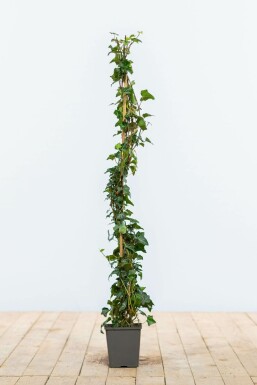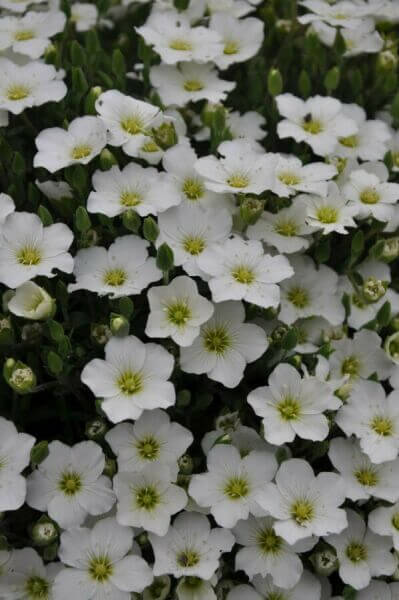Best Hedging Plants For Side Gardens
Best Hedging Plants For Side Gardens
Blog Article
Best Hedging Plants For Creating Enclosures
Improve your garden's allure with rich hedge ranges such as Yew (Taxus), Thuja, Laurel, Photinia, and Bamboo, commemorated for their structural integrity and ecological benefits.
Yew and Thuja supply evergreen coverage and winter season resilience, while Laurel provides quick growth and broad, aromatic leaves.
Photinia adds seasonal beauty with its dynamic red foliage, and Bamboo provides a low-maintenance, serene atmosphere.
These hedges enhance air quality, minimize noise, and produce tranquil, personal spaces.
Appropriate planting, spacing, and upkeep guarantee energetic development and environmental harmony.
Explore how these lush ranges can elevate your garden's appeal and well-being.
Key Takeaways
Change Your Garden With Lush Hedge Ranges
- Select Yew for its dense, evergreen growth and unrivaled durability.
- Opt for Laurel for its fast growth and broad leaves, making sure fast privacy.
- Choose Photinia for its dynamic seasonal foliage, which turns a striking dark red.
- Make use of Bamboo for a low-maintenance, winter-hardy hedge with aesthetic appeal.
- Space plants 2-3 per meter and prune routinely for ideal development and health.
Popular Hedge Plants
When changing a garden with lavish hedge ranges, it's essential to consider popular hedge plants such as Yew, Thuja, Laurel, and Photinia due to their special attributes and advantages.
Yew (Taxus) is extremely respected for its durability and thick, green growth, making it a prime choice for withstanding landscapes.
Thuja is kept in mind for its evergreen foliage and robust winter season resilience.
Photinia includes seasonal vibrancy with red leaves that darken over time, producing vibrant visual appeal.
Laurel offers quick development and aromatic, broad leaves, perfect for fast personal privacy.
Additionally, Bamboo is an outstanding choice for ambiance, providing a low-maintenance, winter-hardy option that improves the garden's visual with its elegant, swaying canes.
These choices deal with a variety of horticultural needs and preferences.
Advantages of Garden Hedges
Garden hedges provide a multitude of advantages, making them an important addition to any landscape. These natural barriers are cost-efficient to execute and offer considerable wind defense, improving air circulation and adding to noise decrease. The thick foliage of hedges like Thuja and Beech guarantees privacy by blocking exposure, producing a peaceful and remote environment.
Hedges also play a crucial role in microclimate regulation, offering a stable environment that cultivates plant growth and decreases temperature variations. Their intricate leaf structures filter toxins, improving air quality and adding to a healthier garden community.
Additionally, hedges master sound reduction, soaking up and deflecting acoustic waves to lower ambient sound levels. This dual performance of supplying both visual and acoustic personal privacy boosts the overall serenity and visual appeal of any garden.
Planting and Upkeep Tips
For an effective hedge, meticulous preparation of the planting area is essential. Guarantee the soil has correct pH and drain to support strong root development.
Space the plants properly for the picked species. Water the hedge frequently during its initial growth phase, changing as required with seasonal modifications.
Implement a systematic bug control and disease prevention strategy, utilizing organic or chemical treatments when necessary. Regularly inspect for aphids, termites, and fungal infections.
Apply mulch to retain moisture and reduce weeds. Seasonal pruning promotes thick development and air flow, vital for plant health.
Following these guidelines will help you cultivate a vibrant, well-maintained hedge that improves the charm of your garden.
Spacing and Trimming Guidelines
Spacing and Cutting Standards
Appropriate spacing and trimming are crucial for cultivating healthy, aesthetically appealing hedges. Sufficient spacing makes sure each plant gets sufficient nutrients, light, and air flow.
Follow these standards for ideal hedge maintenance:
- Spacing: Position hedge plants 2-3 plants per meter to motivate robust growth.
- Pruning Techniques: Routine pruning is vital for preserving desired hedge height and shape. Cut new development in summertime and cut back older wood throughout winter.
- Seasonal Care: Change cutting approaches and schedules according to seasonal requirements to make sure plant health.
- Hedge Height: Routinely monitor and trim to maintain the wanted hedge height and attain uniform aesthetic appeals.
Adhering to these actions will guarantee your hedge flourishes, boosting both the appeal and functionality of your garden.
Picking the Right Hedge
Picking the Right Hedge
Picking the suitable hedge involves assessing elements such as mature height, foliage density, and environmental resilience. Successful hedge plant choice needs understanding each types' development characteristics and site-specific versatility.
For example, Yew (Taxus) uses excellent longevity and thick development, while Thuja is significant for its winter resilience. Furthermore, thinking about upkeep requirements is essential; fast-growing species like Laurel or Privet need routine cutting, whereas low-maintenance alternatives like Bamboo or Ivy may be preferable for those seeking minimal upkeep.
Environmental elements such as soil type, light accessibility, and wetness conditions must likewise assist the choice procedure. This mindful approach ensures the picked hedges will thrive, providing both aesthetic and functional benefits to the garden landscape.
Shipment and Planting Guidance
To ensure your hedge plants flourish, they should be delivered by specialized couriers and planted promptly upon arrival.
Follow these essential actions for effective planting:
- Soil Preparation: Improve the soil with natural matter to enhance drainage and nutrient content.
- Planting Depth: Develop a trench two times the width and equal to the depth of the root ball.
- Watering Techniques: Water completely after planting, keeping the soil consistently moist however not filled.
- Mulching: Use a layer of mulch to retain wetness and reduce weeds.
Consumer Support and Service
Given the vital function of timely help in horticultural pursuits, our customer assistance team is offered six days a week through telephone, email, and social networks to provide skilled suggestions and quickly address any issues. Their dedication to fast response times ensures consumer complete satisfaction by resolving questions associated with plant health, optimal planting techniques, and upkeep schedules.

----------------------
Telephone
Within two days
This detailed support system, reinforced by an excellent 9.3/ 10 client rating, highlights our dedication to improving the gardening experience for every customer.
Often Asked Questions
The Length Of Time Does It Take for Hedge Plants to Develop?
Hedge plants normally require one to 3 years to become completely established, with the specific duration differing by types and growing conditions.
Efficient care throughout this crucial period is essential for robust development. Consistent watering, watchful weed control, and proper fertilizer application are essential in promoting strong root development.
For instance, fast-growing species like Laurel may develop faster, while slower-growing varieties such as Yew may take longer. Diligent maintenance speeds up the facility process, resulting in thick and healthy hedges.
What Are the Best Hedge Plants for Personal Privacy?
The concern of the very best hedge plants for privacy includes examining evergreen and deciduous options.
Evergreen hedges like Thuja, Laurel, and Cypress offer year-round protection, making sure constant privacy.
In contrast, deciduous hedges such as Beech provide seasonal personal privacy, shedding leaves in cooler months.
Key maintenance ideas for personal privacy hedges consist of routine cutting, fertilizing in spring, and proper spacing-- generally 2 to 3 plants per meter.
Furthermore, consistent watering and persistent weed elimination are important for promoting healthy, thick growth.
Can Hedge Plants Attract Wildlife to My Garden?
Yes, hedge plants can draw in wildlife to your garden by offering vital benefits like shelter, food, and nesting sites, thus improving local biodiversity. Yew, holly, and laurel are exceptional for drawing in birds, while ivy supports a variety of insects.
However, it's important to note that there are some disadvantages, such as increased maintenance to manage pests and routine maintenance. Carefully selecting and keeping hedge ranges can help balance these drawbacks and advantages, eventually fostering a sustainable and lively community in your garden.
Are There Any Blooming Hedge Plants Available?
Yes, there are flowering hedge plants available that can boost the charm of your garden.
For instance, Elaeagnus, likewise understood as Olive Willow, produces fragrant white flowers in the fall, adding a touch of elegance.
Photinia, another popular option, showcases lively red leaves that develop into an abundant green, creating a vibrant visual result throughout the seasons.
To ensure these plants thrive, it's necessary to practice correct pruning strategies and seasonal upkeep, such as trimming brand-new development in the summertime and cutting back in the winter.
These procedures will assist preserve the health and aesthetic appeal of your blooming hedges.
How Do I Avoid Pests in My Hedge Plants?
To prevent bugs in hedge plants, use natural insect control techniques and preserve appropriate hedge care. Introduce advantageous insects like ladybugs, which prey on hazardous bugs, to develop a well balanced environment.
Frequently check your hedges for indications of problem and quickly eliminate any afflicted parts to avoid the spread. Make sure the health of your hedges by using well balanced fertilizers and offering appropriate water.
Use mulching to keep soil moisture and correct spacing to lower plant tension and promote robust development. These practices jointly assist in decreasing bug concerns and keeping a healthy hedge.
Conclusion
In essence, picking the ideal hedge ranges such as Yew, Thuja, and Laurel can change any garden into a peaceful haven. These plants supply year-round plant, enhance aesthetic appeal, and deal useful benefits like sound reduction and wind protection.
Correct planting methods, accurate spacing, constant watering, and seasonal cutting are important for optimum growth.
Reliable shipment services and professional customer support make sure a seamless experience from purchase to planting, making it simpler than ever to raise your outside space.
Garden hedges use a wide range of advantages, making them a valuable addition to any landscape. These natural barriers are cost-effective to carry out Article source and provide substantial wind security, enhancing air flow and contributing to noise decrease. The thick foliage of hedges like Thuja and Beech makes sure personal privacy by obstructing visibility, producing a serene and remote environment.

Pruning Methods: Regular pruning is essential for keeping preferred hedge height and shape. Trim brand-new development in summertime and cut back older wood throughout winter season.
Report this page